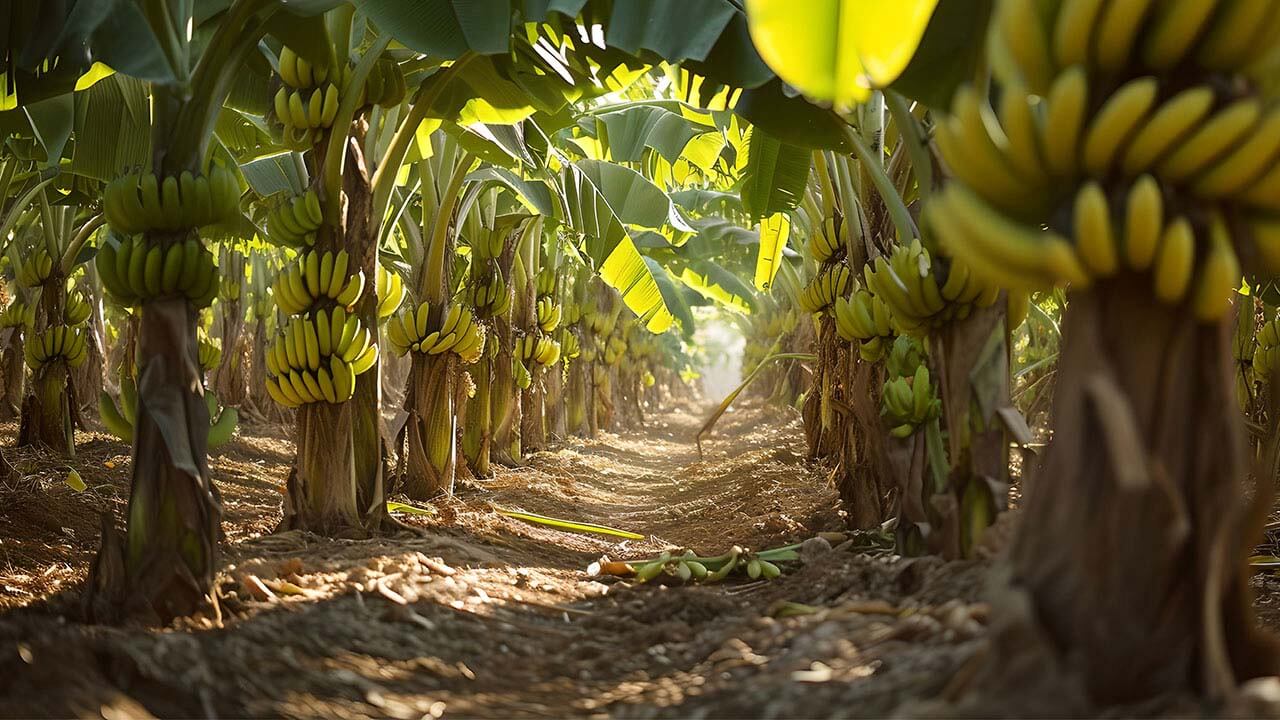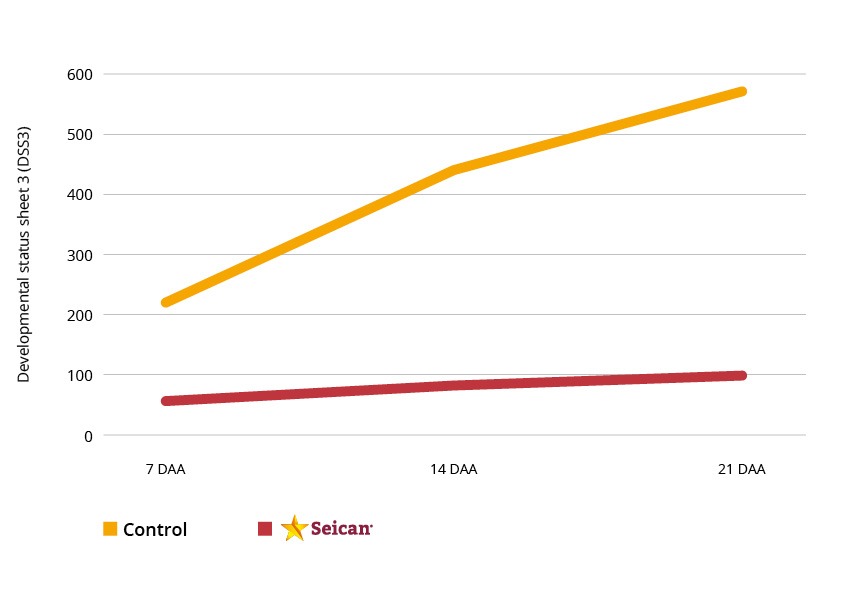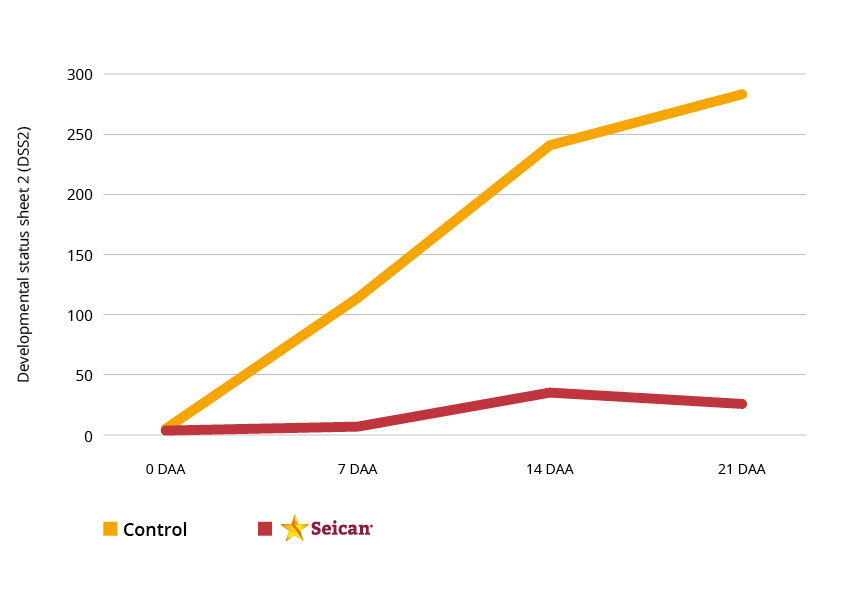Banana fungicides: alternatives to chemical control

Banana crop
Bananas are one of the most economically and socially important crops in some agricultural regions of Latin America, Asia and Africa. Their strategic nature explains the need to protect this crop from the threat of diseases that can ultimately destroy it.
In our previous blog post, we identified black sigatoka as one of the main threats to bananas, based on its most obvious symptoms and the environmental conditions conducive to its occurrence.
Control of the disease has been mainly based on the use of banana fungicides. The pressure of the pathogen in some growing areas and the need to protect the fruit for export means that dozens of sprays are required each year, which not only increases production costs but also has a negative impact on the environment and the health of the sprayers.
Mancozeb has been one of the most widely used fungicides in bananas for chemical control of black sigatoka because of its multi-site mode of action and low risk of resistance. However, the use of mancozeb has been banned on the EU market since 2021 due to its negative impact on human health and the presence of residues.
Replacing mancozeb
If Europe does not accept the use of this molecule or its derivatives in its production, then fruit and vegetables imported from third countries should not contain traces of this active ingredient either. Otherwise, there is a high risk that the goods will be rejected and cannot be traded in the markets of destination.
This series of restrictions on the use of banana fungicides has accelerated the need for more sustainable alternatives to mancozeb and, at the same time, much more closely aligned with the regulation of the powerful EU market in everything related to the chemical control of black sigatoka in bananas.
In this scenario, a window of opportunity opens for Seican, a biological fungicide and acaricide developed and registered by Seipasa for the control of black sigatoka in bananas.
Seican is a fast and effective solution thanks to its curative and eradicant action by contact, and offers growers great reliability and flexibility thanks to its zero withdrawal period. It is a product that leaves no residue on the crop and can be applied immediately before harvest, without having to wait hours or days for the product to degrade.
In its curative action, Seican promotes changes in the enzymatic activity of the pathogen’s cell wall. It inhibits fungal growth and prevents the penetration and colonisation of mycelia and spores.
Seican also has an eradicant effect, allowing the fungus to be controlled at the invasion stage. In addition, its anti-sporulation action interrupts this process to dry out the spots and limit the spread of the disease.
This can be seen in figures 1 and 2 on disease severity in the trial developed in Colombia to evaluate the efficacy of the product in controlling black sigatoka in bananas.
In this case, the fungal development stage measures the growth of the sigatoka spot on the leaf and the development of necrosis on the surface. As can be seen from the two graphs, the action of Seican dries out the spot and stops new spots from appearing, a clear demonstration of its eradicating effect.
Figure 1. Disease severity on the leaf 2.

Figure 2. Disease severity on the leaf 3.
Minimising the risk of resistance
Another advantage of Seican as a banana fungicide is its resistance behaviour. Seican is included in FRAC group BM 03, an element that certifies the product’s ability to prevent the development of resistance. Group BM 03 is also the group that contains the most innovative molecules in the microbiological and botanical group.
FRAC’s support is very important because banana growers, i.e. those who face black sigatoka every season, carry out their rotations according to FRAC’s classifications and recommendations. Its guidelines regulate the use of available molecules and establish the rotation of different modes and mechanisms of action to minimise the risk of resistance.


